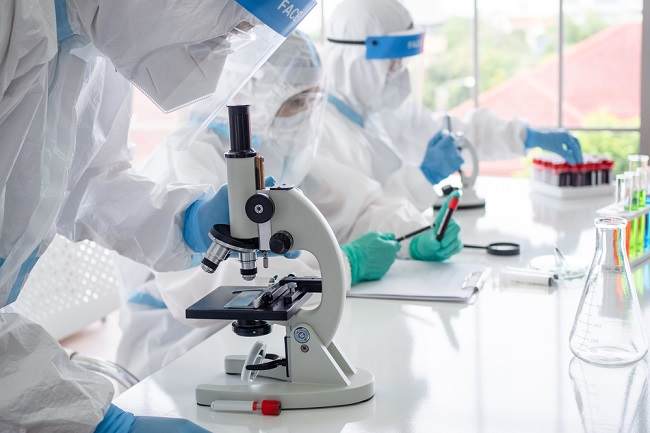Spermatoceles are cysts near the testicles that form due to the accumulation of sperm in the epididymis. Spermatoceles are generally benign, but may need to be removed if they grow larger.
Spermatoceles are also known as spermatic cysts or epididymal cysts. The epididymis is a small tube located at the top of the testicle. This tube serves to accommodate and distribute sperm. When the epididymis becomes blocked, a spermatocele can form.

Spermatoceles contain a clear fluid that may contain sperm. This condition is most common in men aged 20–50 years and rarely affects children. Although it can cause complaints, spermatoceles do not cause problems in male fertility.
Causes of Spermatocele
Spermatoceles occur when sperm accumulate in the epididymis. However, it is not known what causes the buildup.
There is some suspicion that spermatoceles occur due to blockage or inflammation, for example from infection or injury. However, many cases of spermatocele occur without a history of infection or previous injury.
Symptoms of Spermatocele
Spermatocele cysts generally do not cause symptoms. However, these cysts can sometimes be felt in the testicles as lumps the size of a pea.
In the case of large spermatoceles, the patient may feel pain or an uncomfortable sensation in the testicles. In addition, the testicles will also feel heavy and full.
When to go to the doctor
Check with your doctor if you feel a lump in the testicle. Examination by a doctor is necessary to rule out the possibility of enlarged testes caused by other conditions, such as testicular cancer.
Immediately consult a doctor if swelling in the testicles is accompanied by pain, especially if the condition occurs suddenly, for no apparent reason, and continues to worsen.
Spermatocele Diagnosis
Doctors can diagnose a spermatocele through a physical examination, namely by palpating the scrotum (testicle sac), to look for lumps or areas that are hard or painful to the touch. If there is a lump, the doctor may order additional tests, such as:
- Transillumination, which is by shining a flashlight into the scrotum to see if the lump is filled with fluid or is a solid lump (tumor)
- Testicular ultrasound, to confirm in more detail the structure of the lump in the scrotum
Spermatocele Treatment
As long as they do not cause symptoms or complaints, spermatoceles generally do not require treatment. While the spermatocele is causing discomfort or pain, the doctor may only prescribe medication, such as paracetamol or ibuprofen, to relieve it.
However, if the spermatocele is very bothersome or if its size is getting bigger, surgical methods can be used to treat this complaint. Several surgical methods that can be used to treat spermatoceles are:
Spermatocelectomy
Spermatocelectomy is the removal of a spermatocele from the epididymis through an incision in the scrotum. This procedure is preceded by local or general anesthesia.
In patients undergoing this surgery, the doctor will suggest several things to do after the procedure, namely:
- Compressing the scrotal area with ice to reduce swelling
- Taking painkillers for a few days
- Undergo a follow-up examination between 1-3 weeks postoperative
Aspiration
Aspiration is a procedure to aspirate the fluid inside a spermatocele cyst. This procedure is performed using a special needle that is inserted through the scrotum.
In the recurrence of spermatocele, the doctor will perform aspiration with sclerotherapy. Sclerotherapy is the injection of chemicals into the spermatocele to form scar tissue, and prevent the spermatocele from forming again.
Spermatocele Complications
Complications that can be experienced by patients with spermatocele are postoperative complications, which include injury to the epididymis or injury to the tube that carries sperm to the penis (Fig.vas deferens). Injury to both parts can cause fertility problems.
In addition, spermatoceles can also reappear even after surgery. However, this condition rarely occurs.
Spermatocele Prevention
Spermatocele cannot be prevented. Therefore, do periodic self-examination of the scrotum, at least once a month. The examination can be done by standing in front of a mirror and palpating the scrotum.
The more regular the examination, the easier it will be for you to notice changes or lumps in the scrotum. If you find any abnormalities, immediately visit a doctor for further examination.









